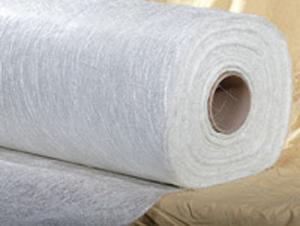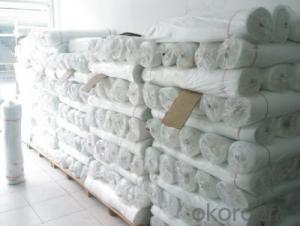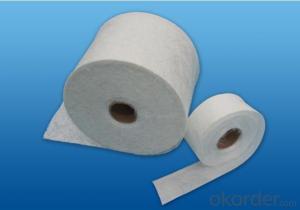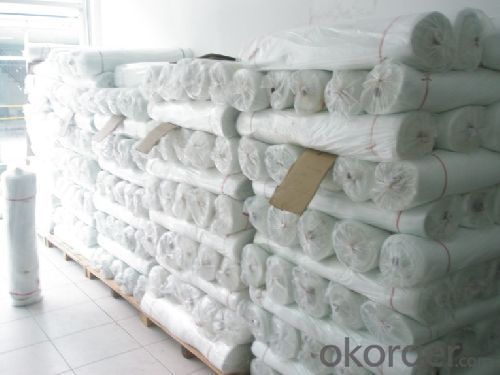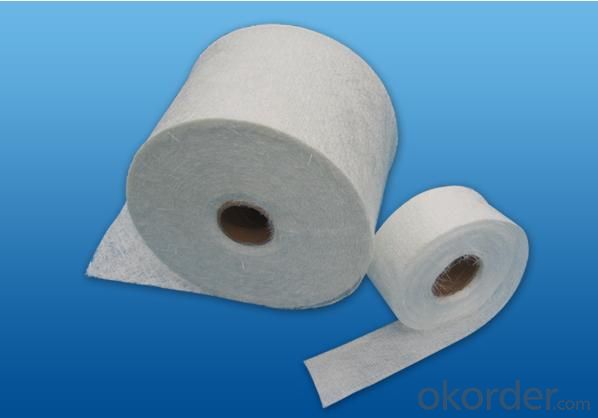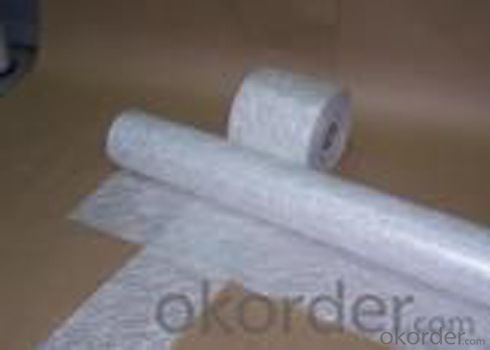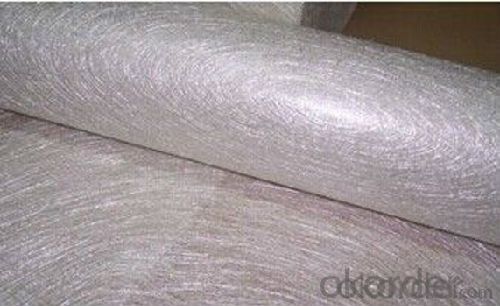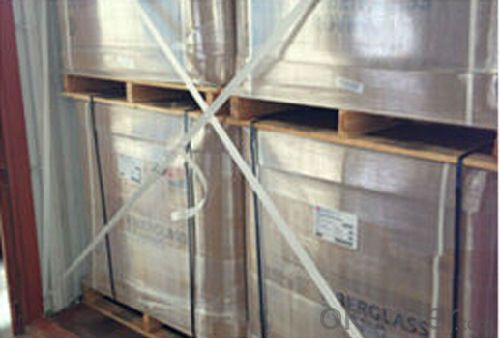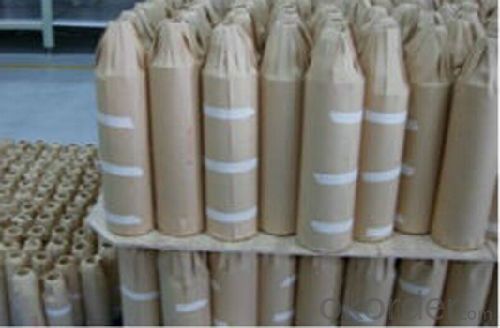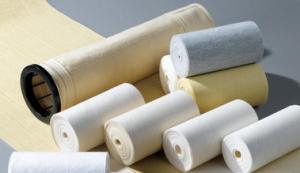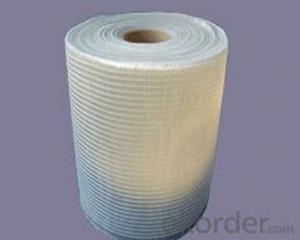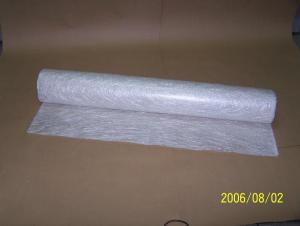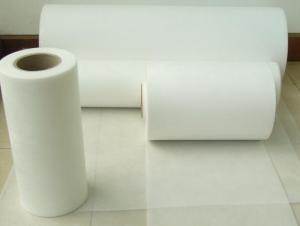Fiberglass Mat Tissue - Fiberglass Stitched Mat 300g 150~2600mm
- Loading Port:
- Shanghai
- Payment Terms:
- TT or LC
- Min Order Qty:
- 5000 m²
- Supply Capability:
- 200000 m²/month
OKorder Service Pledge
OKorder Financial Service
You Might Also Like
Description & application | ||||||||||||||||||||||||
◎ The stitched mat is made of chopped strand which randomly dispersed and be stitched together by polyester thread. The width is available from 150-2400mm.Density of mat generally is 300-600g/m2.
| ||||||||||||||||||||||||
| ||||||||||||||||||||||||
◎ Uniform thickness, good wet tensile strength retention. ◎ Excellent mechanical properties. | ||||||||||||||||||||||||
| ||||||||||||||||||||||||
| ||||||||||||||||||||||||
| ||||||||||||||||||||||||
Each roll is wrapped by PE film and then packed into carton. Stacking in bulk or palletized is available, the pallet shall be no higher than 2 layers.
|
FAQ
1) Which delivery term will you usually offer?
We usually offer FOB Chongqing, FOB Shenzhen, FOB Shanghai or CIF port (defined by the customer).
2) What are the specialties on your company?
We specialized in Reliable quality material, good technical guidance, and full range of products (from High end to off – grade quality materials and cover most of glass fiber products) in order to meet different customer’s requirements. We have close contact with major glass fiber manufacturers in China that can save you too much time.
- Q: How is fiberglass mat tissue used in the production of windshields?
- Fiberglass mat tissue is a crucial component in the production of windshields due to its unique properties and functions. When manufacturing windshields, the fiberglass mat tissue is used as a reinforcement material to enhance the strength and durability of the glass. During the production process, a layer of fiberglass mat tissue is inserted between two layers of glass to create a laminated structure. This layer acts as a barrier, preventing the glass from shattering into small dangerous pieces upon impact. It helps to hold the glass together, providing safety to the vehicle occupants. The fiberglass mat tissue serves as a reinforcing material, improving the mechanical properties of the windshield. It enhances the impact resistance, making the windshield less prone to cracks or chips from stones, debris, or other objects that may hit it while driving. This reinforcement also adds structural integrity to the windshield, allowing it to withstand extreme weather conditions and vibrations without compromising its functionality. Furthermore, the fiberglass mat tissue helps to reduce noise transmission and vibrations. It has sound-damping properties, which contribute to a quieter and more comfortable driving experience by reducing external noise from entering the vehicle cabin. Additionally, the use of fiberglass mat tissue allows for the production of curved windshields. The flexibility of the material enables it to conform to different shapes and contours, allowing manufacturers to create windshields with customized designs and improved aerodynamics. In summary, fiberglass mat tissue plays a vital role in the production of windshields. Its reinforcement properties enhance the strength and impact resistance of the glass, providing safety to the vehicle occupants. It also contributes to a quieter driving experience and enables the production of curved windshields with improved aerodynamics.
- Q: Can fiberglass mat tissue be used for reinforcing fiberglass pools?
- Fiberglass mat tissue is indeed suitable for reinforcing fiberglass pools. This product, known for its thin and flexible nature, is widely utilized in the construction and repair of fiberglass structures, including pools. Comprising delicate glass fibers bonded together with a binder, the mat tissue offers added strength and reinforcement when applied to the pool's surface. By doing so, it effectively prevents cracks and damage. Typically, it is used in conjunction with fiberglass resin, which acts as an adhesive to securely attach the mat tissue to the pool surface. The practice of utilizing fiberglass mat tissue for reinforcing fiberglass pools is widely adopted, as it significantly increases the pool's lifespan and durability.
- Q: How is fiberglass mat tissue made?
- Fiberglass mat tissue is made through a process called wet-laid process, which involves several steps. First, glass fibers are created by melting and extruding glass through small holes to form continuous filaments. These filaments are then coated with a sizing agent to improve their handling properties and strengthen the final product. Next, the glass fibers are chopped into short lengths to create a fiber mat. This is usually done using a knife or a rotary chopper. The chopped fibers are then collected and formed into a thin layer on a moving conveyor belt. In parallel to this, a binder solution is prepared by mixing a synthetic resin with water. This solution is then sprayed onto the fiber mat to wet and bind the fibers together. The amount of binder used determines the strength and flexibility of the final product. To ensure uniform distribution of the binder and proper consolidation of the mat, it passes through a series of rollers. These rollers apply pressure to remove excess water, squeeze the fibers together, and promote bonding between the fibers. Once the mat is consolidated and the desired thickness is achieved, it is dried in an oven or through hot air currents. This removes any remaining moisture and cures the binder, transforming it into a solid resin. After drying, the fiberglass mat tissue is wound into rolls for storage or further processing. It can be used as a reinforcing material in various industries, such as construction, automotive, and aerospace, due to its excellent strength, corrosion resistance, and thermal insulation properties.
- Q: Can fiberglass mat tissue be used for acoustic panels?
- Yes, fiberglass mat tissue can be used for acoustic panels. It is commonly used as a core material in acoustic panels due to its excellent sound absorption properties. The fibers in the tissue help to dissipate sound energy and reduce echo and reverberation in a room.
- Q: Can fiberglass mat tissue be used in wet environments?
- Yes, fiberglass mat tissue can be used in wet environments. Fiberglass mat tissue is designed to be resistant to moisture and can withstand exposure to water, making it suitable for applications in wet environments. It is commonly used in industries such as construction, marine, and automotive, where components or structures are exposed to water, humidity, or moisture. The material's resistance to water ensures that it maintains its structural integrity and does not degrade or lose its performance properties when subjected to wet conditions.
- Q: What are the different surface textures available for fiberglass mat tissue?
- Fiberglass mat tissue offers various surface textures for different purposes. One popular option is a sleek and polished smooth surface, achieved through the use of a smooth roller or mold during manufacturing. This texture is commonly used for applications that require a sophisticated finish. Another choice is a coarse or rough surface, suitable for applications that need better adhesion. It is accomplished by employing a textured roller or mold during manufacturing, resulting in a surface with small bumps or ridges that increase surface area for improved bonding with adhesives or coatings. A third option is a patterned or embossed surface, used in applications that require aesthetic appeal or enhanced grip. This texture is achieved by employing a patterned roller or mold, resulting in a surface with raised or recessed designs that can be visually appealing or provide added traction when used in flooring or decking materials. Furthermore, manufacturers have the flexibility to customize the surface texture of fiberglass mat tissue to meet specific requirements. This includes creating textured surfaces with specific patterns or designs tailored to individual needs or preferences. In summary, the diverse surface textures available for fiberglass mat tissue offer a wide range of applications, providing choices for smooth finishes, improved adhesion, aesthetic appeal, or enhanced grip.
- Q: Can fiberglass mat tissue be used in structural applications?
- Indeed, structural applications can make use of fiberglass mat tissue. This lightweight and flexible material is frequently employed as reinforcement in construction and engineering endeavors. It is often combined with resin or concrete to enhance the structural integrity of diverse components. The remarkable strength-to-weight ratio of fiberglass mat tissue renders it exceptionally fitting for reinforcing walls, roofs, and floors. Furthermore, its resistance to corrosion, moisture, and chemicals allows for its utilization in diverse environments. The wide-ranging applicability and enduring nature of fiberglass mat tissue contribute to its widespread preference in structural applications.
- Q: Can fiberglass mat tissue be used for roofing applications?
- Yes, fiberglass mat tissue can be used for roofing applications. Fiberglass mat tissue is a lightweight and flexible material that is commonly used in the construction industry for various purposes, including roofing. It is often used as a reinforcement layer in roofing systems to enhance their strength and durability. The fiberglass mat tissue is typically impregnated with bitumen or other waterproofing agents to create a water-resistant barrier on the roof. It also helps to improve the fire resistance and thermal insulation properties of the roof. Moreover, fiberglass mat tissue is resistant to mold, mildew, and other common roofing issues, making it an ideal choice for roofing applications.
- Q: How does the width of fiberglass mat tissue affect its installation?
- The installation process of fiberglass mat tissue can be influenced by its width. When contemplating the width of fiberglass mat tissue, it is vital to consider the specific demands of the application or project. A broader fiberglass mat tissue can offer numerous benefits during installation. Firstly, it enables a greater coverage area, reducing the number of required overlaps and potentially saving time during installation. This can be especially advantageous in large-scale projects where efficiency is of utmost importance. Moreover, a wider width can provide better overall coverage and minimize the risk of potential gaps or weak points in the installation. This can result in a more consistent and reliable end product, ensuring improved performance and durability. However, it is important to note that a wider fiberglass mat tissue may also present certain challenges during installation. It can be more challenging to handle and maneuver, particularly when working in tight or confined spaces. This may necessitate additional caution and attention to ensure proper alignment and smooth application. Additionally, the width of fiberglass mat tissue can impact the amount of resin or adhesive required for installation. A wider width may necessitate a larger quantity of resin or adhesive, potentially leading to an increase in the overall project cost. Ultimately, the choice of fiberglass mat tissue width should be based on the specific requirements and limitations of the project. Factors such as the size of the installation area, the extent of coverage needed, and the available resources should all be taken into account to determine the most suitable width for the application.
- Q: Can fiberglass mat tissue be used for making lightweight doors?
- Yes, fiberglass mat tissue can be used for making lightweight doors. Fiberglass mat tissue is a lightweight material that is commonly used in various industries for its strength and durability. It is made of thin strands of fiberglass that are bonded together with a binder, resulting in a strong and flexible material. When used in the construction of doors, fiberglass mat tissue offers several advantages. Firstly, it is lightweight, making it ideal for creating doors that are easy to handle and install. This can be particularly beneficial in residential or commercial settings where doors are frequently opened and closed. Additionally, fiberglass mat tissue possesses excellent thermal and acoustic insulation properties. This means that doors made with this material can effectively block out noise and regulate temperature, creating a more comfortable and energy-efficient environment. Furthermore, fiberglass mat tissue is resistant to moisture, rot, and insects, making it a durable and long-lasting option for door construction. It can withstand harsh weather conditions, making it suitable for both interior and exterior doors. Overall, fiberglass mat tissue is a versatile material that can be used to create lightweight doors that offer strength, durability, insulation, and resistance to various environmental factors.
Send your message to us
Fiberglass Mat Tissue - Fiberglass Stitched Mat 300g 150~2600mm
- Loading Port:
- Shanghai
- Payment Terms:
- TT or LC
- Min Order Qty:
- 5000 m²
- Supply Capability:
- 200000 m²/month
OKorder Service Pledge
OKorder Financial Service
Similar products
Hot products
Hot Searches
Related keywords
